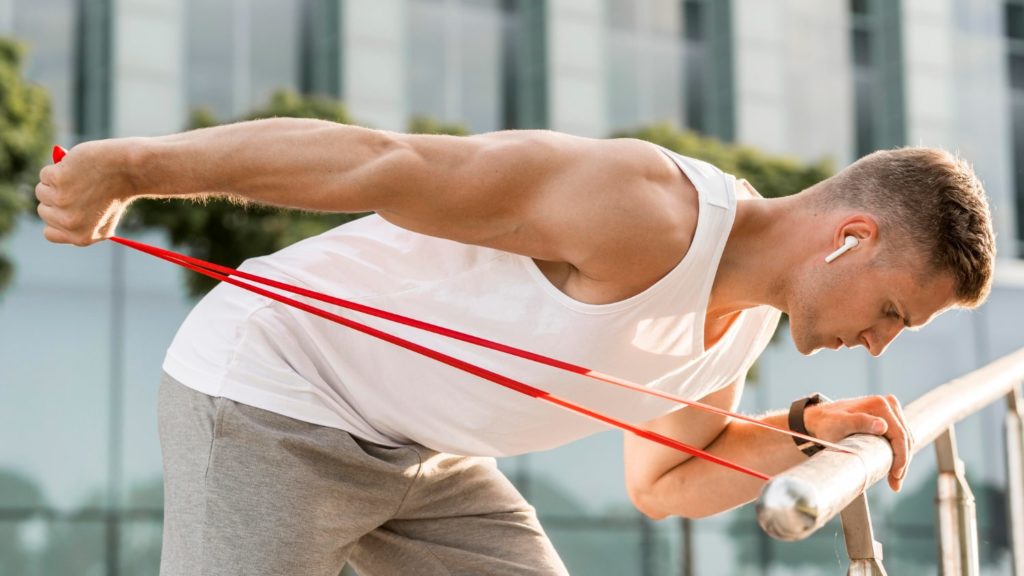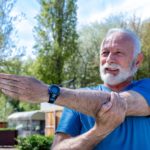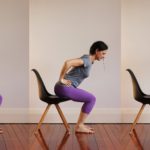
Craig Ballard
(MSc (Sports & Exercise Nutrition), BSc, BTEC (Sports & Exercise Sciences), CYQ/QCF (Personal training and Instruction)
When it comes to building impressive arms, the triceps play a crucial role in both size and definition. The “horseshoe triceps” refers to the well defined shape that appears when all three heads of the triceps; the long, lateral, and medial heads, are properly developed.
In some individuals, it may take on more of a croissant-like shape, beginning at the elbow, then splitting and extending up the arm, wrapping around the back and side.
This short guide will walk you through
- key exercises
- how to optimise your results
- how to avoid common mistakes when building well-defined triceps
Whether you’re a beginner or an experienced lifter, following these principles will help you achieve a balanced and powerful arm.
The Tricep
The three heads of the triceps each originate from different points, giving them distinct starting locations. The lateral and medial heads are close neighbours, both attaching to the posterior surface of the humerus, one above and one below. The long head however, extends further up the arm, originating from the infraglenoid tubercle of the scapula on the shoulder blade.
You can read more on the anatomy of the tricep muscle in our previous article Arm Day and Muscular Development: The Triceps Essentials.
For well-rounded triceps development, it’s best to include a variety of exercises that target different shoulder positions, such as those listed below.[1,2,3]
Exercises for triceps
Once we are aware of the equipment available and our personal preferences, it becomes easier to plan exercises and determine the necessary training volume to optimise our progress.
If you recall, our shoulder position dictates the involvement of the individual tricep heads in any pushing movement. When our arm is overhead, the long head of the triceps is recruited more, often allowing for a greater range of motion and increasing the stretch placed upon it.
On the other hand, when our arm is positioned by our side in a neutral position, the medial and lateral tricep heads play a bigger role. While it’s impossible to completely exclude any of the triceps heads, we can emphasize specific heads by adjusting our shoulder position.[1,2,3]
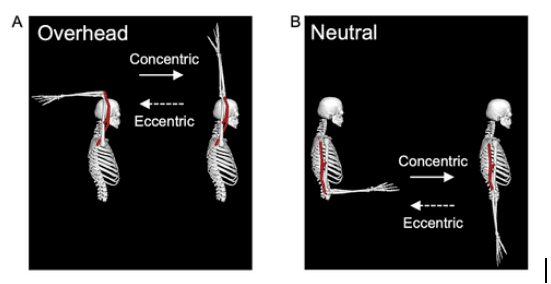
It’s a good idea to include one or two different types of tricep exercises in your program that involve either elevating or lowering the shoulder (shoulder flexion and extension).
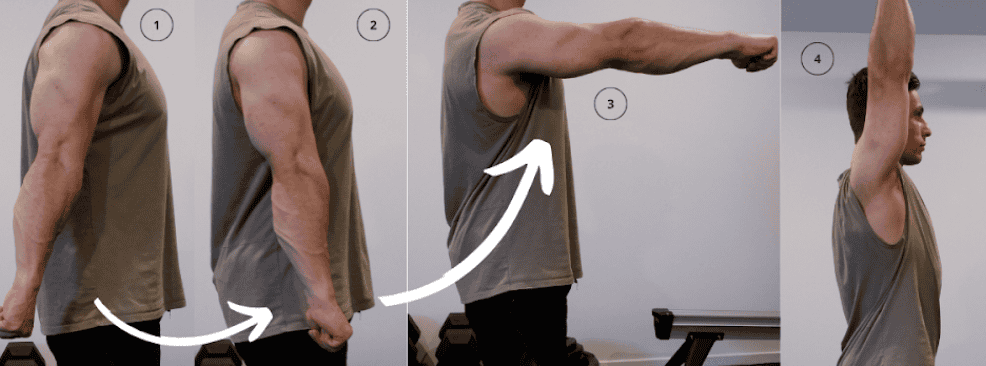
There is also new research suggesting that training a muscle in a more lengthened position may improve muscular adaptations. This is important when we think about any form of overhead tricep extensions as they place more of a stretch on the long head of the tricep.[2,3]
Assuming that you train your whole body and not just triceps, a suggested hierarchy for considering tricep exercise type or their program order might be:
- Compound press: horizontal or vertical movement pattern (e.g. close arm bench press)
- Primary Isolation: overhead elbow extension (e.g. overhead cable extension)
- Secondary Isolation: neutral/straight arm elbow extension (e.g. V-bar push down) or 90 degree shoulder flexion, elbow extension (e.g. dumbbell skull crusher)
This depends greatly on your session goals and overall program. For example, it’s perfectly fine to choose only isolation exercises when programming triceps within a leg or back workout, as these exercises won’t interfere with other pressing movements, muscle groups, or recovery.
Isolation exercises are also less systematically fatiguing since they don’t require loading the body directly (axial loading). However, it’s important to consider the training volume and the potential for muscle soreness, especially if we have pressing movements planned for our next session.
With all that in mind, here are ten tricep exercises that provide the best recruitment for the muscle group taking into consideration the amount of load you can utilise, shoulder position and isolation of the tricep muscles.
Bodyweight exercises
- Close-grip push-ups (deficit – provides a more lengthened position)
- Triceps dips (bench or parallel bars, upright with elbows tight to the body)
- TRX – skull crushers
Dumbbell exercises
- Overhead triceps extension (single arm)
- Skull crushers
Barbell exercises
- Close-grip bench press (allows for greater loads)
- Skull crushers (allows for greater loads over the dumbbell alternative)
Cable machine exercises
- Triceps pushdowns (with a rope, v-bar or straight bar).
- Overhead cable triceps extensions (single hand or double handed)
- Kick backs (single hand, allows greater range of motion behind the back)
Triceps workout routines
Here are three examples of tricep workouts, each varying in exercise difficulty and training volume. You can use them as a standalone program or incorporate them into your current training split.
Beginner triceps workout (4-8 sets)
1. Assisted Dip Machine (optional: bench dips) – 3 sets of 12-15 reps
Focus: Control the negative/eccentric phase, 2-3 seconds down.
2. Overhead Dumbbell Extension (optional: cable) – 3 sets of 10-12 reps
Focus: Bring the dumbbell as low as possible to gain more of a stretch on the long head of the triceps.

Intermediate triceps workout (6-9 sets)
1. Close-Grip Bench Press – 3 sets of 8-10 reps
Focus: Compound movement emphasizing the triceps.
2. Cable Triceps Pushdowns – 3 sets of 10-12 reps
Focus: Targets the lateral head.
3. Skull Crushers (EZ Bar or Dumbbell) – 3 sets of 8-10 reps
Focus: Full triceps engagement with heavy resistance.
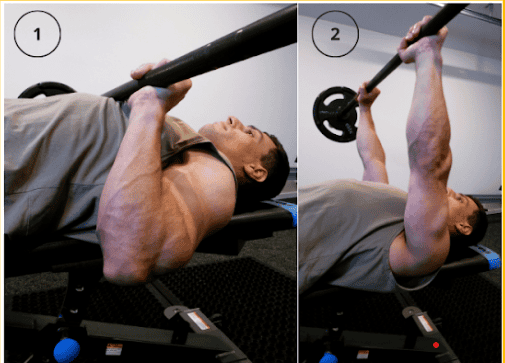
Advanced triceps workout (8-12 sets)
1. Weighted Dips (Parallel Bars) – 4 sets of 6-8 reps
Focus: Staying upright places more emphasis on the triceps.
2. Close-Grip Bench Press – 4 sets of 6-8 reps
Focus: Strength and compound arm engagement.
3. Incline Skull Crushers – 4 sets of 10-12 reps
Focus: Emphasizes more of the long head under stretch.
Alternative: Overhead Cable Extension (Rope) – 4 sets of 12-15 reps
Focus: Controlled stretch and contraction for hypertrophy.
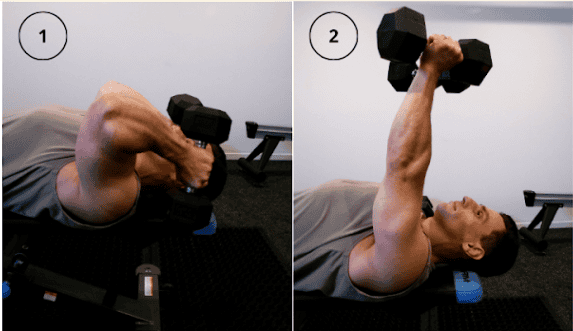
Always be mindful of starting with lower weight on new exercises, before you get accustomed to movement.
Recovery for bigger triceps
Building well defined triceps isn’t just about lifting weights, it also requires proper nutrition and recovery. Muscle growth happens outside the gym, so focusing on the right fuel and recovery methods is essential for maximising results.
Protein requirements
You’re probably already aware that protein is essential for muscle growth and repair. Unlike fats and carbohydrates, our bodies can’t store protein in the same way, making it crucial to consume enough daily especially if the goal is to build muscle.
So, how much protein do we actually need? There’s no single magic number, but 1.6 grams per kilogram of body weight is a solid starting point.[4] For a 75kg male, this could look like an omelet with whole wheat toast for breakfast, grilled chicken with quinoa and veggies for lunch, Greek yogurt with almonds as a snack, and salmon with sweet potato and asparagus for dinner.
RELATED — What is the function of amino acids in our body?
That said, research suggests that higher protein intakes up to and beyond 3.5g per kg of body weight may offer additional benefits.[5] However, there are likely diminishing returns at higher levels, and the practicality of consuming such large amounts becomes more challenging. Beyond a certain point, relying on supplementation may be necessary to reach those higher targets.
Sleep
Sleep is probably the most underrated of all recovery recommendations. When we’re sleeping our body is repairing and building new muscle tissue.
Sleep manages our production of vital hormones which are crucial for repairing body tissues. Sleep deprivation increases cortisol levels and decreases testosterone and Insulin-like Growth Factor 1 (IGF-1), creating an environment that hinders muscle growth and recovery.[6,7]
Sleep deprivation increases cortisol levels and decreases testosterone
We also release human growth hormone (hGH), which is vital for muscle repair, and is released in significant amounts during sleep.[8] Sleep restriction also sets off a cascade of other reactions, further impacting muscle protein synthesis, which is crucial for maintaining muscle mass, likely leading to increased protein breakdown. On top, increases inflammation, which can impair muscle recovery after exercise-induced damage.[7,8]
RELATED — Great Sleep means Great Health: 17 Health Benefits of Good Sleep
To improve the quality of sleep and achieve 7-9 hours of uninterrupted rest, consider making a few simple adjustments.
Key strategies include maintaining a consistent sleep schedule, creating an optimal sleep environment, one that is dark, quiet, cool, tidy, and well-ventilated, and incorporating mindfulness and regular exercise into your daily routine.[10]
Common mistakes to avoid
Poor form
Maintaining proper form during any exercise is crucial for reducing the risk of injury and ensuring that the load is placed directly on the working muscles.[11]
This not only provides a better stimulus but also leads to more impressive results over time. While using strict form often requires lighter weights, which may bruise the ego, it helps prevent imbalances, reduces the risk of future injuries, and promotes a more balanced and aesthetically pleasing physique.
Using too much momentum
Our body wants to be as efficient as possible, aiming to minimise effort by engaging other muscle groups and using momentum to reduce the load on the working muscles.
As fatigue sets in and metabolites accumulate in the muscles, you’ll experience localised discomfort or a burning sensation. At this stage, your form is likely to break down, this is known as technical failure, where you can no longer perform quality repetitions without relying on other muscles or momentum.
However, this is different from muscular failure, where the target muscle can no longer generate enough force to move the load by itself.[12]
Neglecting a full range of motion
We don’t need to use a full range of motion (ROM) to build strength or muscle, but we’re likely missing out on potential results. A full ROM engages a greater number of muscle fibers, ensuring more comprehensive muscle stimulation.
By not going to the end range, including the deep stretch with the muscle under tension (e.g., deep squats, full bicep curls), we miss out on promoting muscle growth through stretch mediated hypertrophy. Also it’s likely a full ROM helps develop muscles evenly across their length, possibly reducing imbalances and injury risk.
Full range of motion engages a greater number of muscle fibers
Isolation exercises allow us to get closer to true muscular failure because they demand less support from other muscles and often make it easier to perform a full ROM.
They often restrict movement within a specific range, making it harder to use momentum or recruit supporting muscle groups. Another reason why isolation movements are a good choice to program later in your training sessions.
Overtraining or insufficient recovery
Resistance training breaks down muscle tissue and provides the stimulus needed for growth, but actual muscle building occurs during
- rest
- recovery
- proper nutrition
While this might seem obvious, it’s often overlooked, many people either do too much volume in the gym or fail to allow sufficient time between sessions for the body to repair muscle damage and adapt to the previous stimulus.[13]
Not targeting all three heads equally
For triceps specifically, relying on the same exercises without incorporating variation across the three shoulder positions; overhead, 90-degree flexion, and neutral arm position, can limit your growth potential. Incorporate variety to prevent plateaus by changing your exercise variation every 4-8 weeks.
Conclusion
Developing strong, well-defined triceps requires more than just isolating them with endless arm day routines. By understanding the triceps’ anatomy and function, we can tailor exercises and programs to ensure balanced development and optimal results.
- Prioritising compound movements for overall strength and incorporating progressive overload principles will help maximize growth while minimising fatigue and injury risks.
- Including isolation exercises strategically can further target specific triceps heads to enhance symmetry and definition.
- Ultimately, effective triceps training comes down to smart programming, proper technique, and consistent effort. Whether you’re a beginner or an advanced lifter, applying these principles and avoiding common mistakes will help you build stronger, more muscular arms while improving overall upper-body performance.
- Start small with one of the suggested workouts and stay consistent for long-term results.
References
(1) Maeo, S., Wu, Y., Huang, M., Sakurai, H., Kusagawa, Y., Sugiyama, T., Kanehisa, H., & Isaka, T. (2022). Triceps brachii hypertrophy is substantially greater after elbow extension training performed in the overhead versus neutral arm position. European Journal of Sport Science, 23(7), 1240–1250. https://doi.org/10.1080/17461391.2022.2100279
(2) Pedrosa, G. F., Lima, F. V., Schoenfeld, B. J., Lacerda, L. T., Simões, M. G., Pereira, M. R., Diniz, R. C. R., & Chagas, M. H. (2021). Partial range of motion training elicits favorable improvements in muscular adaptations when carried out at long muscle lengths. European Journal of Sport Science, 22(8), 1250–1260.
(3) Kassiano, W., Costa, B., Nunes, J. P., Ribeiro, A. S., Schoenfeld, B. J., & Cyrino, E. S. (2023). Which roms lead to Rome? A systematic review of the effects of range of motion on muscle hypertrophy. Journal of Strength and Conditioning Research.
(4) Morton, R. W., Murphy, K. T., McKellar, S. R., Schoenfeld, B. J., Henselmans, M., Helms, E., Aragon, A. A., Devries, M. C., Banfield, L., Krieger, J. W., & Phillips, S. M. (2018). A systematic review, meta-analysis and meta-regression of the effect of protein supplementation on resistance training-induced gains in muscle mass and strength in healthy adults. British journal of sports medicine, 52(6), 376–384. https://doi.org/10.1136/bjsports-2017-097608
(5) Tagawa, R., Watanabe, D., Ito, K., Ueda, K., Nakayama, K., Sanbongi, C., & Miyachi, M. (2020). Dose-response relationship between protein intake and muscle mass increase: a systematic review and meta-analysis of randomized controlled trials. Nutrition reviews, 79(1), 66–75. Advance online publication. https://doi.org/10.1093/nutrit/nuaa104
(6) Dattilo, M., Antunes, H. K., Medeiros, A., Mônico Neto, M., Souza, H. S., Tufik, S., & de Mello, M. T. (2011). Sleep and muscle recovery: endocrinological and molecular basis for a new and promising hypothesis. Medical hypotheses, 77(2), 220–222. https://doi.org/10.1016/j.mehy.2011.04.017
(7) Dáttilo, M., Antunes, H. K. M., Galbes, N. M. N., Mônico-Neto, M., DE Sá Souza, H., Dos Santos Quaresma, M. V. L., Lee, K. S., Ugrinowitsch, C., Tufik, S., & DE Mello, M. T. (2020). Effects of Sleep Deprivation on Acute Skeletal Muscle Recovery after Exercise. Medicine and science in sports and exercise, 52(2), 507–514. https://doi.org/10.1249/MSS.0000000000002137
(8) Chennaoui, M., Vanneau, T., Trignol, A., Arnal, P., Gomez-Merino, D., Baudot, C., Perez, J., Pochettino, S., Eirale, C., & Chalabi, H. (2021). How does sleep help recovery from exercise-induced muscle injuries?. Journal of science and medicine in sport, 24(10), 982–987.
(9) Estafanos, S., Adams, C., Tinline-Goodfellow, C., & Hodson, N. (2020). Can you out-exercise a bad sleep? A muscle-centric view. The Journal of physiology, 598(13), 2549–2550. https://doi.org/10.1113/JP279913
(10) Allen, S. L., Howlett, M. D., Coulombe, J. A., & Corkum, P. V. (2016). ABCs of SLEEPING: A review of the evidence behind pediatric sleep practice recommendations. Sleep medicine reviews, 29, 1–14.
(11) McCrary, J. M., Ackermann, B. J., & Halaki, M. (2015). A systematic review of the effects of upper body warm-up on performance and injury. British Journal of Sports Medicine, 49(14), 935–942. https://doi.org/10.1136/bjsports-2014-094228
(12) Grgic, J., Schoenfeld, B. J., Orazem, J., & Sabol, F. (2022). Effects of resistance training performed to repetition failure or non-failure on muscular strength and hypertrophy: A systematic review and meta-analysis. Journal of sport and health science, 11(2), 202–211. https://doi.org/10.1016/j.jshs.2021.01.007
(13) Morán-Navarro, R., Pérez, C. E., Mora-Rodríguez, R., de la Cruz-Sánchez, E., González-Badillo, J. J., Sánchez-Medina, L., & Pallarés, J. G. (2017). Time course of recovery following resistance training leading or not to failure. European journal of applied physiology, 117(12), 2387–2399.

